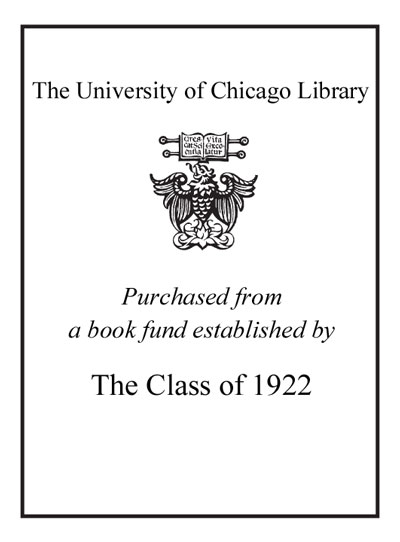Rural planning in developing countries : supporting natural resource management and sustainable livelihoods /
Saved in:
| Author / Creator: | Dalal-Clayton, D. B. (D. Barry) |
|---|---|
| Imprint: | London ; Sterling, VA : Earthscan, 2003. |
| Description: | xxi, 226 p. : ill. ; 25 cm. |
| Language: | English |
| Subject: | |
| Format: | Print Book |
| URL for this record: | http://pi.lib.uchicago.edu/1001/cat/bib/4798598 |
Table of Contents:
- List of figures, boxes and tables
- About the authors
- Preface
- Acknowledgements
- Authors' note
- List of acronyms and abbreviations
- Introduction
- 1. Lessons from experience
- Rural planning: perspectives, concepts and the objectives and roles of government
- Experience of regional planning
- A move to decentralized rural and regional planning
- Focus on poverty and rural livelihoods
- Sustainable livelihoods
- Stakeholders
- Land tenure
- Security of tenure
- Coordinating tenure incentives and disincentives
- Rural-urban linkages
- Income diversification
- Migration
- Implications for planning
- The dilemma of planning for the urban-rural interface
- 2. Conventional, technical planning approaches
- Resource surveys for planning
- Land evaluation
- Land capability classification
- The USBR system
- FAO framework for land evaluation
- Parametric indices
- Process models
- Financial and economic evaluation
- Strategic land evaluation
- Land use planning
- Sectoral plans
- Land allocation procedures
- Multiple criteria analysis
- Resource management domains
- Land use planning experience in developing countries
- FAO guidelines for land use planning
- Faith in negotiation
- Impact assessment
- Decentralized district planning
- Some planning responses to the challenge of sustainable development
- Techniques
- National and regional planning exercises
- Sustainable development strategies
- National strategies
- Sub-national strategies
- Local-level strategies
- Some common features of existing strategic planning processes
- Guidance on strategies for sustainable development
- A continual learning approach
- Sustainable development indicators
- Pros and cons of conventional approaches
- Common limitations of natural resource surveys
- Terms of reference
- Comprehension
- Usefulness
- Inappropriate planning methods and inappropriate data: a failure of institutions
- 3. Approaches to participation in planning
- The need for participation
- Perceptions of participation
- Horizontal and vertical participation
- Participatory learning and action
- Participatory planning
- Examples of local-level resource planning
- Scaling-up and linking bottom-up and top-down planning
- Regional rural development
- Rapid district appraisal (RDA)
- Participatory approaches in large-scale projects
- The catchment approach
- NGOs as catalysts
- The gestion de terroir approach in francophone West Africa
- Participatory planning in Latin America
- Approaches in the forestry sector
- Landcare in Australia
- Limitations of participation
- The quality of information
- Costs of participation
- Great expectations
- Dealing with power
- Conclusions
- 4. A basis for collaborating
- The natural resources battlefield
- Constraints and opportunities for collaboration
- Concepts and methods in collaborative management of natural resources
- Stakeholders
- Donors as stakeholders
- Dealing with relationships and power
- Prerequisites for collaboration
- Political will
- Renegotiation of roles
- An enabling institutional environment
- Capacity
- Putting stakeholder participation into practice
- Valuing resources
- Differentiating goods and services
- Classifying goods and services according to the concepts of welfare economics
- Differentiating agriculture from natural resources
- Market value of natural capital
- Political values
- Combination of different valuation methods
- Combining PRA and economic methods
- Commodity chain analysis
- Linking resources to users
- Forest resource accounting
- Institutional support for rural planning
- Institutional realities
- Complex and poorly coordinated institutional framework
- Incentives to maintain confusion
- Poor public accountability
- Inappropriate performance incentives
- Unsatisfactory donors' strategies
- Little absorption capacity
- Promises and realities of decentralization
- Promise 1. Devolution promotes participation, representation and empowerment of marginal groups
- Promise 2. Devolution entails more equitable distribution of benefits and reduces poverty
- Promise 3. Devolution entails more financial autonomy at the local level
- Promise 4. Devolution improves local accountability
- Promise 5. Devolution increases the effectiveness of LGUs in delivering goods and services
- Better institutions to make rural planning and development work: possible ways forward
- The resource/community level
- The local government level
- Assessing local institutional capacity
- Autonomy to undertake development activities and modify local rules and institutions
- Greater accountability of local institutions
- Subsidiarity
- Capacity development
- The role of the central government
- 5. The way forward
- Planning strategy
- Principles of development planning
- Natural resources surveys
- Institutional support
- Local (community) level
- Local government level (eg district)
- Intermediate level (eg province, region)
- National level
- Conclusions
- Implications for donors
- Uncertainties
- References
- Index

